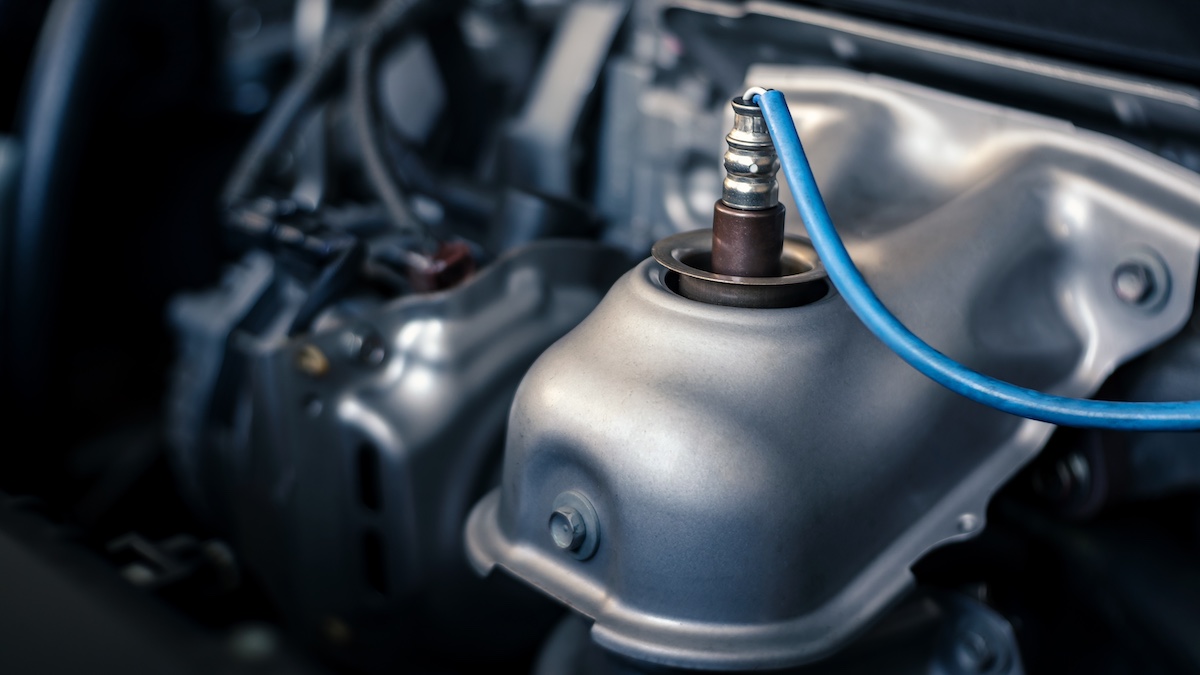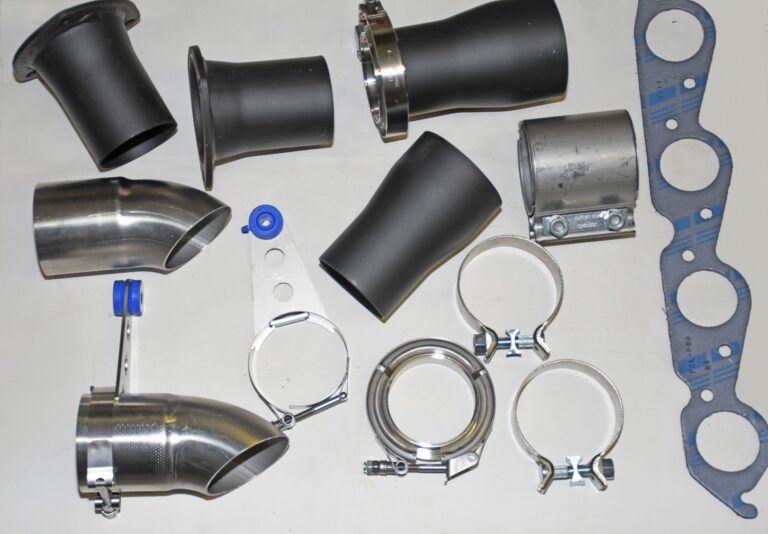How Long Can I Drive With a Bad O2 Sensor
You can drive with a bad O2 sensor, but it may cause lower fuel efficiency and engine performance. Driving with a faulty O2 sensor can lead to decreased fuel economy and potential damage to the catalytic converter.
It is important to address this issue promptly to avoid more serious and costly problems down the line. If your vehicle’s check engine light is on or you notice decreased gas mileage, it’s advisable to have the O2 sensor checked and replaced if needed.
Neglecting this issue could result in poor engine performance and increased emissions, impacting both your driving experience and the environment. Taking care of your O2 sensor promptly will help maintain the overall health and efficiency of your vehicle.

Credit: www.autonationmobileservice.com
The Role Of The O2 Sensor
The O2 sensor plays a crucial role in monitoring the fuel mixture. A faulty sensor can lead to decreased fuel efficiency and potential damage to the catalytic converter over time. It’s crucial to address O2 sensor issues promptly to avoid long-term damage.
Function Of The O2 Sensor
The oxygen sensor, commonly known as the O2 sensor, plays a crucial role in the proper functioning of your vehicle’s engine. This small but mighty sensor is responsible for monitoring the exhaust gases and ensuring the optimal air-to-fuel ratio for combustion. It is located in the exhaust system and constantly measures the oxygen content in the exhaust stream.
Impact Of A Bad O2 Sensor
A malfunctioning O2 sensor can have severe consequences on your vehicle’s performance and emissions. When the O2 sensor fails, it loses its ability to accurately measure the oxygen level in the exhaust gases. This leads to a disruption in the engine’s fuel trim and can result in several problems:
- Poor Fuel Efficiency: The engine control unit (ECU) relies on the O2 sensor’s inputs to adjust the air-to-fuel mixture. Without accurate readings, the engine may run rich or lean, causing a decrease in fuel efficiency.
- Increased Emissions: An imbalanced air-to-fuel ratio can lead to increased emissions of harmful pollutants such as carbon monoxide (CO) and nitrogen oxides (NOx). This not only contributes to air pollution but may also cause your vehicle to fail an emissions test.
- Reduced Engine Performance: With improper fuel mixture, the engine may struggle to deliver the optimal power and torque. You may notice a decrease in acceleration and overall performance.
- Damage to Catalytic Converter: A faulty O2 sensor can also cause damage to your vehicle’s catalytic converter. The converter relies on accurate oxygen readings to operate effectively. If the engine runs too rich for an extended period, it can lead to overheating and failure of the catalytic converter.
Therefore, it is essential to address any O2 sensor issues promptly. While it is possible to drive with a bad O2 sensor for a short period, it is not advisable in the long run. Ignoring the problem can lead to more severe consequences, affecting both your vehicle’s performance and the environment.

Credit: www.topgear.com.ph
Signs Of A Bad O2 Sensor
An oxygen sensor, or O2 sensor, plays a crucial role in monitoring the air-fuel mixture in your vehicle’s engine. This helps ensure optimal performance and fuel efficiency. Here are some common indicators that your O2 sensor may be malfunctioning:
Check Engine Light
The most obvious sign of a bad O2 sensor is when the check engine light illuminates on your dashboard. This warning indicates that the sensor is detecting irregularities in the exhaust system, which can impact engine performance.
Poor Fuel Economy
A faulty O2 sensor can lead to poor fuel economy, causing you to spend more on gas than necessary. When the sensor fails to accurately measure oxygen levels in the exhaust, your engine may run rich, leading to increased fuel consumption.
Potential Risks Of Driving With A Bad O2 Sensor
Driving with a bad O2 sensor can lead to various risks that can impact both the performance of your vehicle and the environment. It is crucial to understand the potential consequences of ignoring this critical component.
Damage To Catalytic Converter
A faulty O2 sensor can cause an imbalance in the air-fuel mixture, resulting in the catalytic converter being overworked. This can lead to overheating and ultimately damage the catalytic converter.
Reduced Engine Performance
The O2 sensor plays a vital role in regulating the engine’s air-fuel ratio. Driving with a faulty sensor can cause misfires, poor fuel efficiency, and overall reduced engine performance.
Options For O2 Sensor Replacement
When it comes to your vehicle’s O2 sensor, it is essential to address any issues as soon as possible. Ignoring a faulty O2 sensor can lead to decreased fuel efficiency, poor engine performance, and even potential damage to other components. Fortunately, there are a couple of options for O2 sensor replacement that you can consider: DIY replacement or professional replacement.
Diy Replacement
If you have some mechanical know-how and are confident working on your vehicle, DIY O2 sensor replacement can be a cost-effective option. Here are the steps to follow:
- Gather the required tools, which typically include a wrench, socket set, and O2 sensor socket.
- Locate the O2 sensor, which is usually found on the exhaust manifold or exhaust pipe.
- Disconnect the electrical connector from the O2 sensor.
- Remove the O2 sensor using a wrench or socket set.
- Install the new O2 sensor by screwing it in place.
- Reconnect the electrical connector to the new O2 sensor.
- Clear the fault codes using an OBD-II scanner to ensure proper functioning of the new sensor.
Remember, though, that DIY replacement requires a certain level of skill and can be time-consuming. If you’re not confident in your abilities or lack the necessary tools, it’s best to seek professional help.
Professional Replacement
If you’re not comfortable working on your vehicle or simply prefer to leave it to the experts, professional O2 sensor replacement is the way to go. Here’s what you can expect from a professional replacement:
- Expertise: Automotive technicians have the knowledge and experience to quickly and accurately diagnose and replace your faulty O2 sensor.
- Quality Parts: Professionals use high-quality O2 sensors to ensure optimal performance and longevity.
- Efficiency: With the right tools and expertise, professionals can complete the replacement process efficiently, saving you time and hassle.
- Warranty: Many professional replacement services offer warranties on their work and the parts they install, giving you peace of mind.
By opting for professional replacement, you can trust that your O2 sensor will be replaced correctly, and any other underlying issues will be addressed. Just be sure to choose a reputable auto repair shop or dealership for the best results.
Final Thoughts On O2 Sensor Maintenance
Proper maintenance of your O2 sensor is crucial for the overall performance and longevity of your vehicle. Ignoring issues with your O2 sensor can lead to decreased fuel efficiency, engine misfires, and ultimately, costly repairs. Fortunately, with regular maintenance and timely replacement, you can avoid these issues and keep your vehicle running smoothly. Here are some key considerations when it comes to O2 sensor maintenance:
Regular Maintenance Importance
Regular maintenance of your O2 sensor is essential to ensure that your vehicle is running efficiently. By monitoring and replacing your O2 sensor as needed, you can prevent potential engine problems and maintain optimal fuel economy. This small investment in maintenance can save you from significant costly repairs down the road.
Cost Of O2 Sensor Replacement
The cost of replacing an O2 sensor can vary depending on the make and model of your vehicle as well as labor costs. However, replacing a faulty O2 sensor is a necessary expense to maintain the performance and efficiency of your vehicle. It’s important to address any O2 sensor issues promptly to avoid further damage to your vehicle and potentially more expensive repairs.

Credit: www.maxwellford.com
Frequently Asked Questions Of How Long Can I Drive With A Bad O2 Sensor
Can You Drive Long Distance With A Bad O2 Sensor?
Yes, you can drive long distance with a bad O2 sensor. However, it’s not recommended as it can negatively affect your vehicle’s performance and fuel efficiency. It’s best to get it fixed to ensure proper functioning.
What Happens If You Drive With A Bad Oxygen Sensor?
Driving with a bad oxygen sensor can reduce fuel efficiency and cause engine performance issues. It may lead to increased emissions and potential damage to the catalytic converter over time. Regular maintenance and timely replacement are recommended.
Can I Drive 500 Miles With Bad O2 Sensor?
Driving 500 miles with a bad O2 sensor is not recommended as it can affect your vehicle’s performance and fuel efficiency. Get it fixed to avoid potential issues on the road.
How Do I Temporarily Fix My O2 Sensor?
To temporarily fix your O2 sensor, you can try cleaning it with an aerosol cleaner or using a fuel system cleaner. However, it’s important to note that these are temporary solutions and it’s best to replace the faulty sensor for a permanent fix.
What Are The Symptoms Of A Bad O2 Sensor?
Common signs include decreased fuel efficiency, rough idling, and illuminated Check Engine light.
Can Driving With A Bad O2 Sensor Cause Damage?
Yes, prolonged driving with a faulty sensor can lead to catalytic converter damage and reduced engine lifespan.
How Long Can I Drive With A Bad O2 Sensor?
You can drive with a bad O2 sensor for a short period, but it’s advisable to fix it promptly.
Conclusion
Driving with a bad O2 sensor can be risky and have long-term consequences for your vehicle’s performance and emissions. It is important to address this issue promptly to avoid potential damage to other engine components and increased fuel consumption. Regular maintenance, including replacing a faulty O2 sensor, will help ensure the optimal functioning of your vehicle and minimize any potential complications.
Don’t delay in seeking professional assistance if you suspect a faulty O2 sensor in your vehicle.


